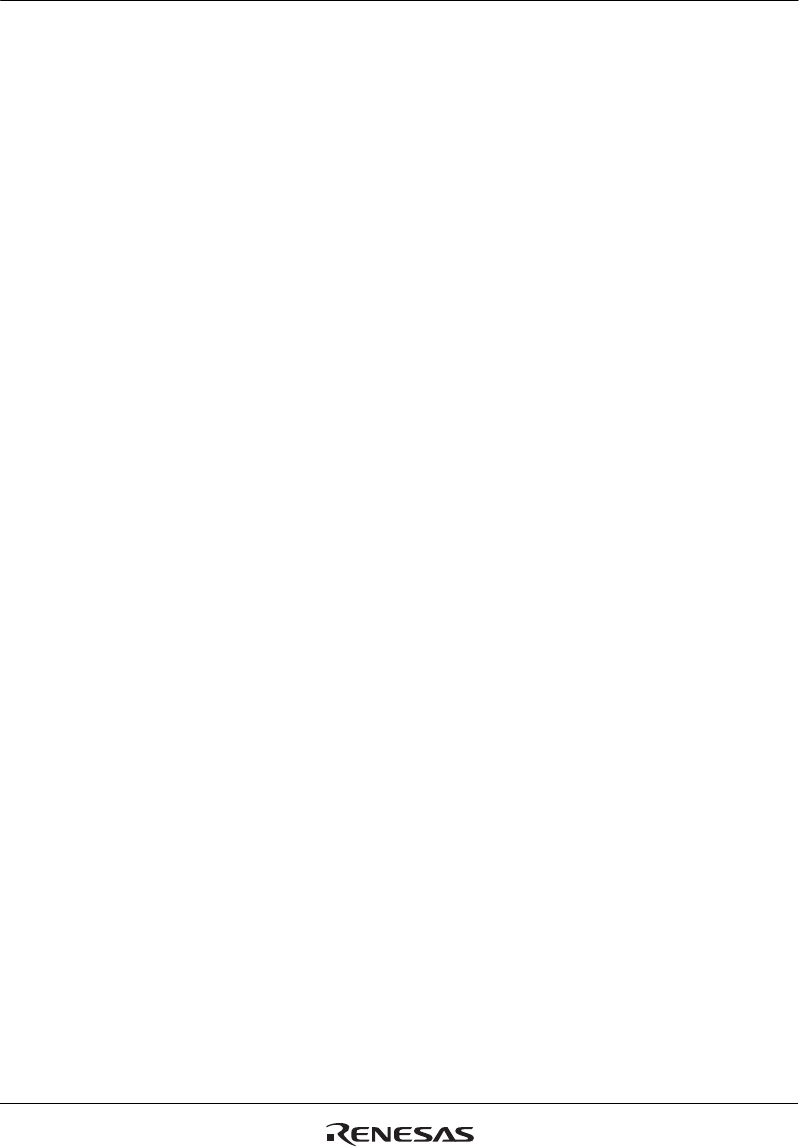
Section 9 Bus State Controller
R01UH0134EJ0400 Rev. 4.00 Page 331 of 2108
Sep 24, 2014
SH7262 Group, SH7264 Group
(b) Self-refreshing
Self-refresh mode is a kind of standby mode, in which the refresh timing and refresh addresses are
generated within the SDRAM. Self-refreshing is activated by setting both the RMODE bit and the
RFSH bit in SDCR to 1. After starting the self-refreshing, PALL command is issued in Tp cycle
after the completion of the pre-charging bank. A SELF command is then issued after inserting idle
cycles of which number is specified by the WTRP1 and WTRP0 bits in CS3WSR. SDRAM
cannot be accessed while in the self-refresh state. Self-refresh mode is cleared by clearing the
RMODE bit to 0. After self-refresh mode has been cleared, command issuance is disabled for the
number of cycles specified by the WTRC1 and WTRC0 bits in CS3WCR.
Self-refresh timing is shown in figure 9.27. Settings must be made so that self-refresh clearing and
data retention are performed correctly, and auto-refreshing is performed at the correct intervals.
When self-refreshing is activated from the state in which auto-refreshing is set, auto-refreshing is
restarted if the RFSH bit is set to 1 and the RMODE bit is cleared to 0 when self-refresh mode is
cleared. If the transition from clearing of self-refresh mode to the start of auto-refreshing takes
time, this time should be taken into consideration when setting the initial value of RTCNT.
Making the RTCNT value 1 less than the RTCOR value will enable refreshing to be started
immediately.
After self-refreshing has been set, the self-refresh state continues even if the chip standby state is
entered using the LSI standby function, and is maintained even after recovery from standby mode
due to an interrupt. Note that the necessary signals such as CKE must be driven even in standby
state by setting the HIZCNT bit in CMNCR to 1.
When the multiplication rate for the PLL circuit is changed, the CKIO output will become
unstable or will be fixed low. For details on the CKIO output, see section 5, Clock Pulse
Generator. The contents of SDRAM can be retained by placing the SDRAM in the self-refresh
state before changing the multiplication rate.
The self-refresh state is not cleared by a manual reset. In case of a power-on reset, the bus state
controller's registers are initialized, and therefore the self-refresh state is cleared.


















